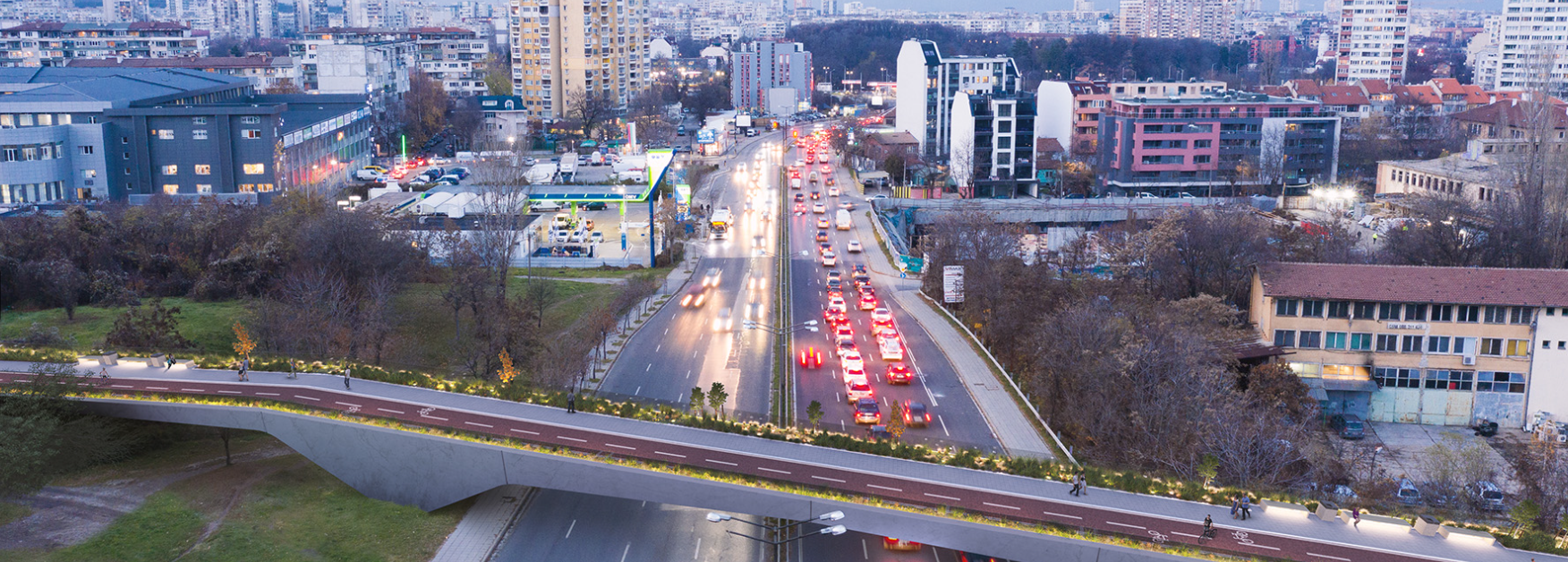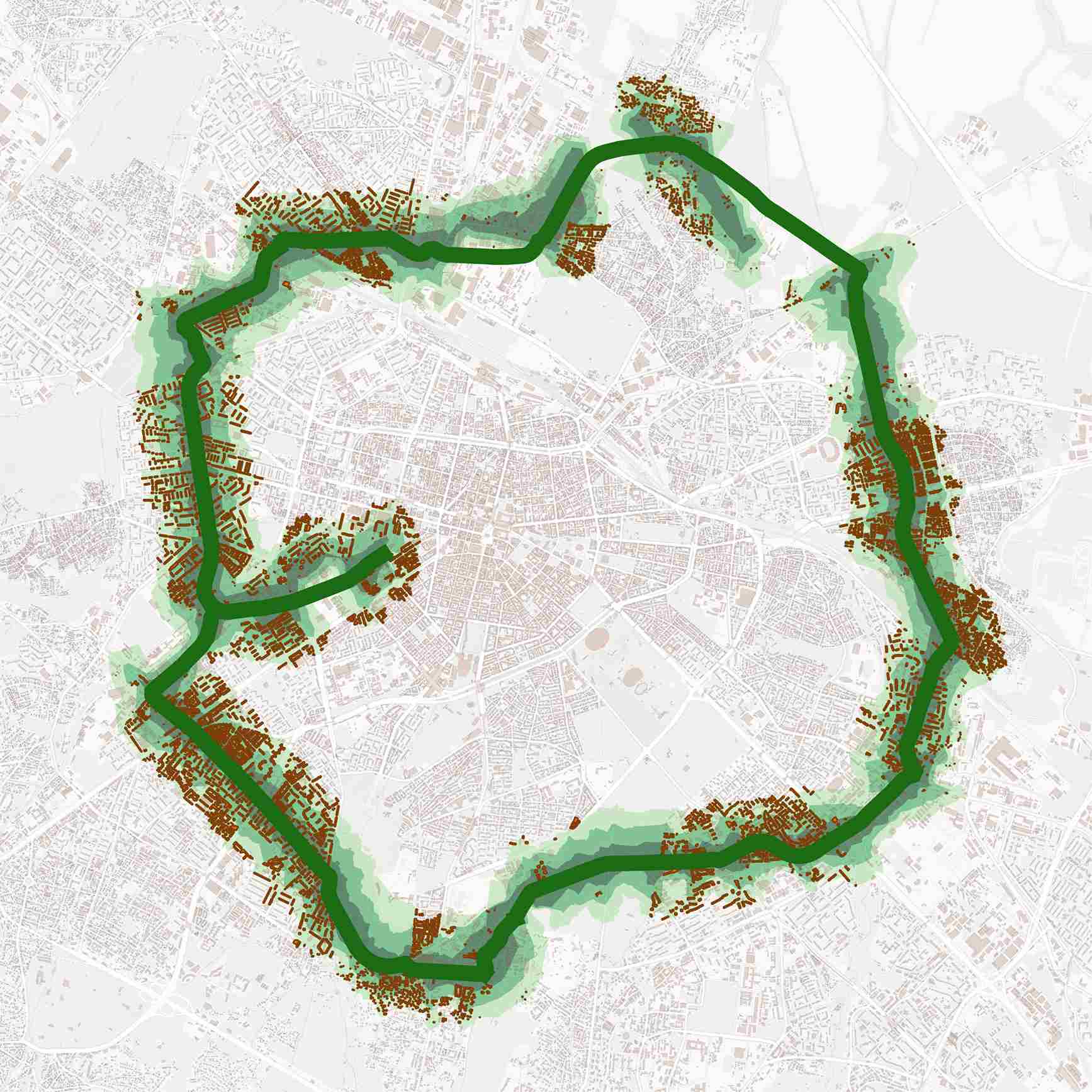Thessaloniki gets ready for its metro launch in November
The underground rapid transit lines have been under construction for almost two decades due to various project delays
 TheMayor.EU logo
TheMayor.EU logo The Green Ring project aims to turn the more neglected parts of the city into integral hubs of sustainable mobility development
On 15 November the local authorities in Sofia unveiled their concept for a so-called “Green Ring” in the Bulgarian capital. The project calls for establishing a 30-kilometre-long park, snaking through the city’s residential areas that should connect neighbourhoods via pedestrian and bike lanes.
The Green Ring will make use of abandoned urban and industrial rail infrastructure that is used to connect the factories and heating plants in the city. Much of the land it plans to use is already part of public parks or dilapidated train infrastructure.
However, since the Bulgarian capital started a process of deindustrialisation around 30 years ago, some of that former rail system has given way to residential buildings or spacious boulevards. City authorities plan to compensate those areas with modern cycling and pedestrian infrastructure, like overpasses.
 Visualisation of the Green Ring, planned overpass, Source: Cosmoscube Ltd via Sofiaplan
Visualisation of the Green Ring, planned overpass, Source: Cosmoscube Ltd via Sofiaplan
Additionally, according to an official statement by Sofiaplan, a municipal company responsible for strategic development, the planned cycling infrastructure in the Green Ring was adopted by the municipality as part of the overall cycling infrastructure concept for the city.
At the same time, authorities plan to start the development of this massive infrastructure project at an abandoned railway station known as “Pioneer” (Пионер), located in the biggest park in Sofia, Borisova Gradina with minimal intervention.
For later stages of development, regional authorities need to deal with procuring the land, and consultations with locals about what type of developments they need and want to see in their regions. This is because a principle point of the green ring is to make more neglected regions in the city attractive for investment and growth.
By all accounts, authorities in Sofia believe that this will be a long process, as different areas of the project are at different stages of development. For example, Sofia Plan has already made several feasibility studies, as well as concepts and benefits analyses, especially for the neighbourhood of Slatina.
Nevertheless, the project has the potential to give 250,000 people access to new green areas, as well as new modes of transportation. Furthermore, the project plans to reach at least 30 neighbourhoods and districts and transform mobility in the city.
 A map overlay of the city and the planned Green Ring route, Source: Sofiaplan
A map overlay of the city and the planned Green Ring route, Source: Sofiaplan

The underground rapid transit lines have been under construction for almost two decades due to various project delays

Now you can get your wine in Talence by paying directly in Bitcoin

That’s because the state has to spend money on updating the railway infrastructure rather than subsidizing the cost of the popular pass

Rethinking renewable energy sources for the urban landscape

The examples, compiled by Beyond Fossil Fuels, can inform and inspire communities and entrepreneurs that still feel trepidation at the prospect of energy transition

Now you can get your wine in Talence by paying directly in Bitcoin

The 10th European Conference on Sustainable Cities and Towns (ESCT) sets the stage for stronger cooperation between the EU, national and local level to fast track Europe's transition to climate neutrality.

At least, that’s the promise made by the mayor of Paris, Anne Hidalgo

The underground rapid transit lines have been under construction for almost two decades due to various project delays

At least, that’s the promise made by the mayor of Paris, Anne Hidalgo

Hostal de Pinós is located in the geographical centre of the autonomous region

Despite its church-y name, the district has long been known as the hangout spot for the artsy crowds

Urban dwellers across the EU are having a say in making their surroundings friendlier to people and the environment.

Forests in the EU can help green the European construction industry and bolster a continent-wide push for architectural improvements.

Apply by 10 November and do your part for the transformation of European public spaces

An interview with the Mayor of a Polish city that seeks to reinvent itself

An interview with the newly elected ICLEI President and Mayor of Malmö

A conversation with the Mayor of Lisbon about the spirit and dimensions of innovation present in the Portuguese capital














